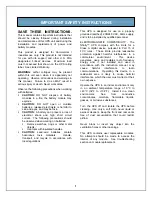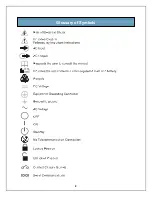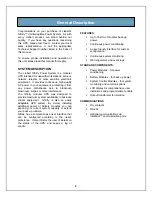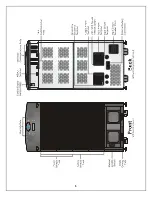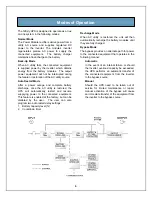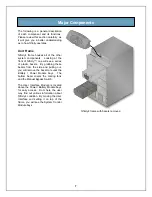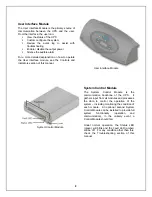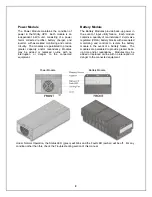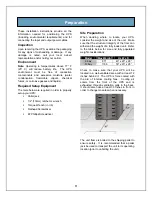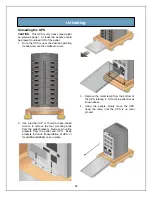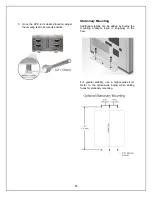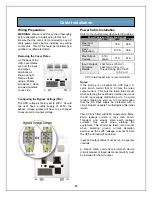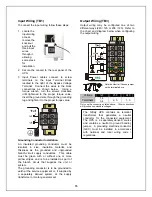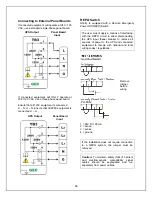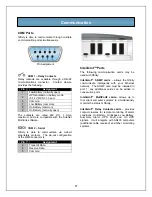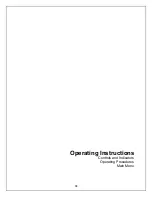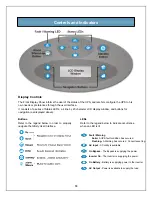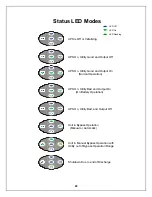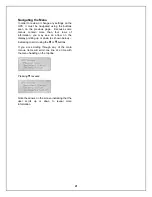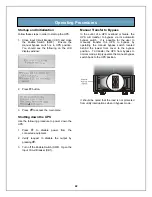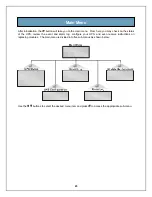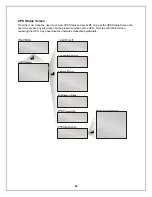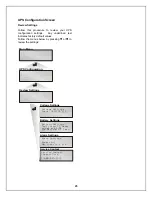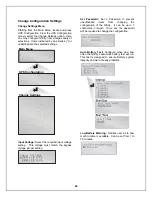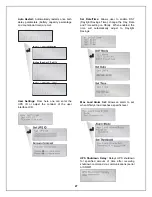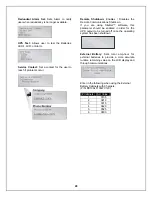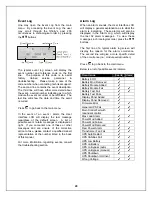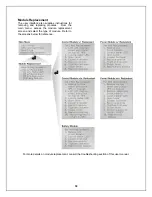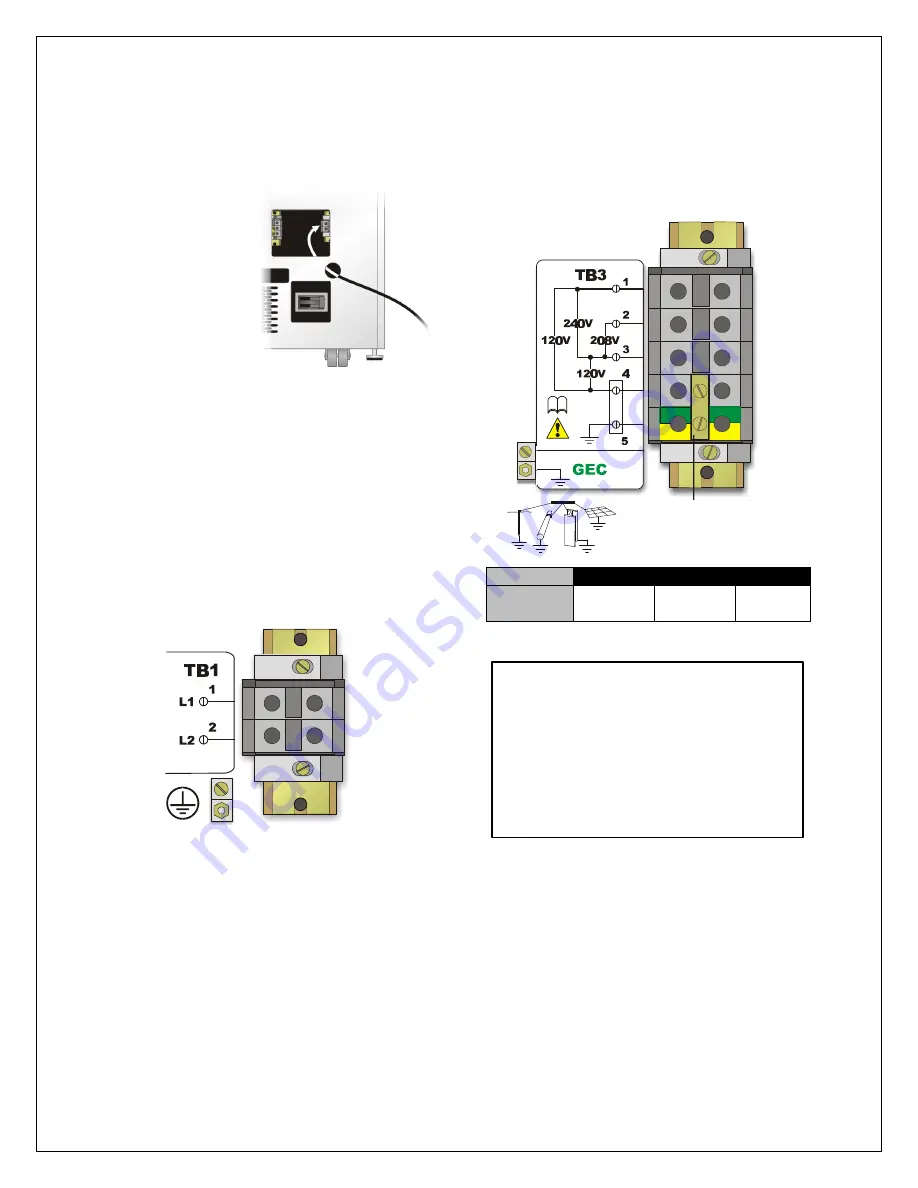
15
Input Wiring (TB1)
To connect the input wiring, follow these steps:
1. Locate the
input wiring
access,
remove the
knockout
and pull the
three input
wires
through it,
allowing
some slack
for
installation.
2. Secure the conduit to the rear panel of the
UPS.
3. Input Power cables connect to screw
terminals on the Input Terminal Block
located to the right of the Bypass Voltage
Terminal. Connect the wires to the block
connections as shown below. Using a
torque wrench, turn the screws clockwise
until tightened to the proper torque value.
Insert the ground wire through the grounding
lug and tighten it to the proper torque value.
Grounding Conductor Installation
An insulated grounding conductor must be
identical in size, insulation material, and
thickness as the grounded and ungrounded
branch-circuit supply conductors. This cable
must be green with or without one or more
yellow stripes, and is to be installed as part of
the branch circuit that supplies the unit or
system.
The grounding conductor is to be grounded to
earth at the service equipment or, if supplied by
a separately derived system, at the supply
transformer or motor-generator set.
Output Wiring (TB3)
Output wiring may be configured one of two
different ways (240 / 120 or 208 / 120). Refer to
the chart and diagram below when configuring
the output wiring.
Note the Neutral / Ground jumper
on the terminal above.
Voltage
120
208
240
Terminals
1, 4
3, 4
2, 3
1, 3
Only use the connections listed above. Other connections
will produce non-standard voltages.
The
Nfinity
UPS contains an isolation
transformer that generates a neutral
conductor for the connected equipment.
The UPS is a separately derived source
and contains a neutral to ground bonding
jumper. A grounding electrode conductor
(GEC) must be installed in accordance
with national and local wiring code /
regulations.
Summary of Contents for 12 bay
Page 1: ...User Manual English 208 V 240 V 60Hz 4 to 16 kVA Power System...
Page 2: ......
Page 4: ...2 Glossary of Symbols...
Page 5: ...3 Introduction General Description Modes of Operation Major Components...
Page 7: ...5...
Page 12: ...10 Installation Preparation Unloading Cable Installation Communications...
Page 20: ...18 Operating Instructions Controls and Indicators Operating Procedures Main Menu...
Page 33: ...31 Troubleshooting Alarm Messages Module LED Indication Module Replacement...
Page 38: ...36 Maintenance Proper Care Scheduled Maintenance Replacing Fan Filters...
Page 40: ...38 Reference Specifications Battery Run Times Warranty Technical Support...

